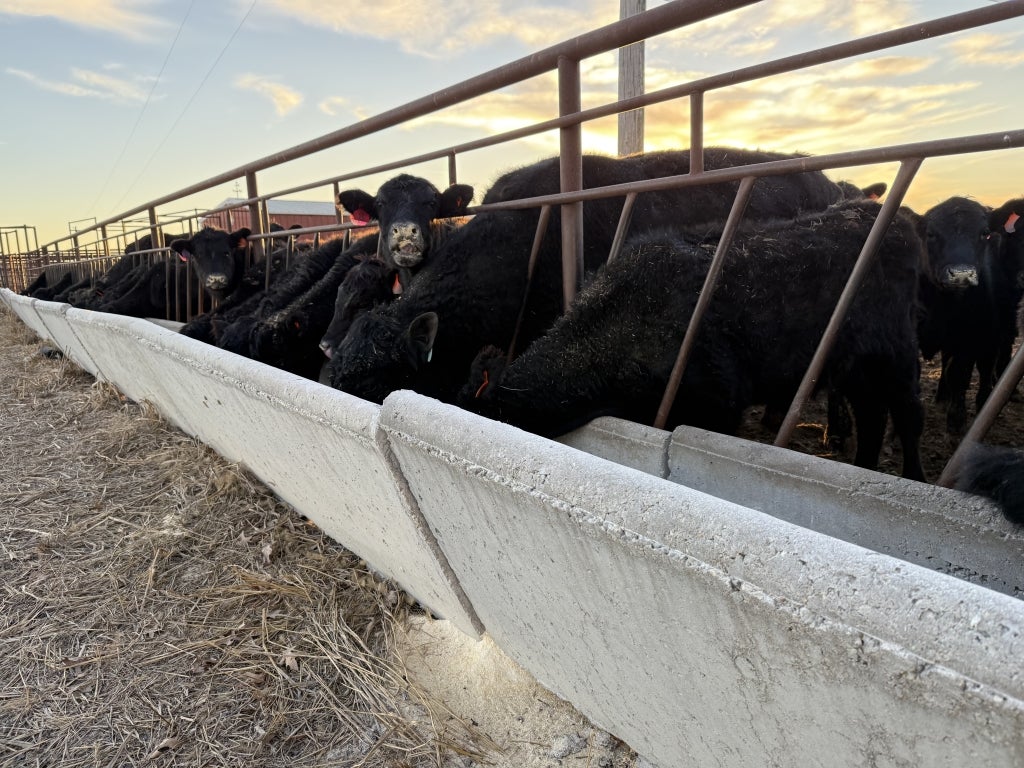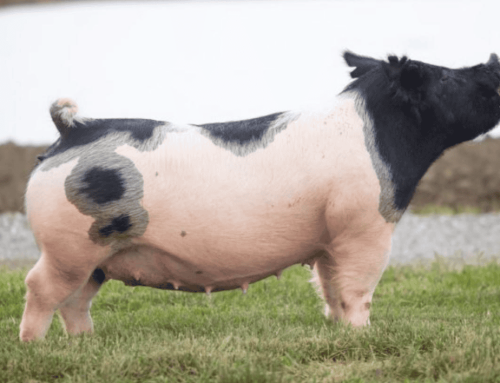
Local cattle enjoy their grain while producers wait in uncertainty about the industry’s future.
The Dietary Guidelines for Americans is a set of recommendations written by the Dietary Advisory Board, which operates under the Department of Health and Human Services (HHS) and the United States Department of Agriculture (USDA). This board comprises industry professionals who hold a doctoral degree in a related field. The guidelines are updated every five years based on current research in foods and nutrition.
Regarding the 2025-30 Dietary Guidelines, the committee has experimented with removing red meat. Supporters of this change argue that red meat and beans, peas, or lentils contain similar protein values, therefore stating that beans would make a suitable substitute.
Several organizations, including the National Cattlemen’s Beef Association (NCBA) and state livestock associations that operate under NCBA, have sprung into action and spoken out about these controversial proposals. One association speaking out is the Kansas Livestock Association (KLA), which created a petition for concerned citizens to write their lawmakers and voice their opposition to these proposed changes.
“We’ve had more than four decades of dietary guidelines advice, and during that time, red meat consumption has declined, yet obesity and chronic disease are on the rise. Seventy percent of the calories in the U.S. diet are plant-based. Now, the committee wants to reduce red meat intake even further, marginalizing the 80% of the population who identify themselves as meat eaters,” said NCBA Executive Director of Nutrition Science and Registered Dietitian Dr. Shalene McNeill in a press release. “These recommendations put some of the most vulnerable at risk for nutrient gaps, especially older Americans, adolescent girls, and women of childbearing age. Beef contributes only 5% of the calories in the American diet but more than 5% of essential nutrients like potassium, phosphorous, iron, B6, niacin, protein, zinc, choline, and B12. It’s baffling that we are trying to get Americans to cut out red meat when the evidence indicates nutrient deficiencies and chronic disease are increasing as red meat consumption declines. As a registered dietitian and nutrition scientist, I am concerned that basing guidelines on highly academic exercises, hypothetical modeling, and weak science on red meat will not produce relevant or practical guidelines and will not help us achieve healthier diets.”
Dr. Erin Beyer, assistant professor of meat science at Kansas State University, shared her initial reaction. “I am disappointed this was the direction the committee decided to go in. I then did a little bit more research into what the 2025 scientific report said, and I think I’m still concerned. I feel slightly better after reading it, but I think the biggest problem was the message portrayed. As these dietary guidelines get written for 2025 and 2030, they always pick new priorities. It appears the two main priorities they are choosing for the guidelines is to decrease alcohol consumption and decrease red meat consumption.”
Kansas Livestock Association Communications Vice President Scarlett Madinger said, “The beef industry has always been a part of that conversation every time the dietary guidelines are taken up every five years and reviewed, and every time that conversation is taken up, beef has been at the table…We always make sure they have that science and that research in front of them.”
The impact of these guidelines will have a variety of effects. While the everyday consumer may not see a direct impact, they could face health impacts if they follow the guidelines. School lunches may see the biggest impacts.
“[School lunches] follow a subsection of the dietary guidelines,” Beyer says. “These demographics — young children, adolescents, women and elderly individuals — could see the most impact if they decrease red meat consumption for all of the benefits of minerals and vitamins, such as iron, and the great source of protein. Depending on if the guidelines are followed, we could see a big impact on health and growth of the next generation.”
It is important to note that this is a current recommendation to the committee, and the committee has not indicated if it will implement these recommendations in the official Dietary Guidelines for Americans. Public opinion opened on Jan. 16 and closed on Feb. 10, at which point the committee will take all the opinions and research before it and compile the 2025-30 Dietary Guidelines for Americans. Public opinion will allow beef producers and the public to voice their thoughts on these guidelines.
However, as pointed out by KLA, this opens the opportunity for non-professionals to influence the committee’s positions based on personal and political beliefs. “There’s been a lot of things that have been taken into consideration throughout the years. When you get involved in these dietary guideline conversations that probably shouldn’t be, they’ve delved into the environmental realm and sustainability. It’s sometimes bearded a little far from the diet and food pyramid and taking a lot of other things into consideration. The scope has gotten a little broader than necessary,” Madinger says.
According to Beyer, “Nutrition has these pendulum swings, and the best example of this is eggs. In the ‘80s, they were considered high cholesterol, so [people were told] not to eat eggs. The guidelines were very different for eggs, and now they are off of that list, so we have completely full circled to the other side and [eggs] are considered to be a healthy part of the diet.”
She also says that removing red meat from the diet risks developing low iron levels, which could lead to widespread anemia if guidelines were to be followed directly as written. Beyer has worked in several countries with high anemia rates, and they have helped lower rates by teaching the proper consumption and preservation of beef.
There are several ways to learn more about this case; visit the Dietary Guidelines Committee website to learn more. For more information, track the case as it unfolds, listen to public hearings, check government websites, monitor media or contact your lawmakers.











